Retelling with file folder puppet theaters
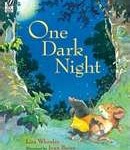 Kids retell stories all the time: they tell what they did over the weekend, what happened on the playground, who really put the building blocks in the fish tank, etc. Retelling is an important skill, and one fun way to retell a story is with puppets. I snagged this idea for making file folder puppet theaters off of this super-cool website: fairy dust teaching (Sally Haughey is one of those amazing teachers who has ideas I love to lift.) Cut windows in two file folders, attach them so you have a sturdy stand, decorate with scrapbooking paper, and ta da! Puppet theater! So now that folders are on sale for pennies a pack, I’m stocking up to make puppet theaters!
Kids retell stories all the time: they tell what they did over the weekend, what happened on the playground, who really put the building blocks in the fish tank, etc. Retelling is an important skill, and one fun way to retell a story is with puppets. I snagged this idea for making file folder puppet theaters off of this super-cool website: fairy dust teaching (Sally Haughey is one of those amazing teachers who has ideas I love to lift.) Cut windows in two file folders, attach them so you have a sturdy stand, decorate with scrapbooking paper, and ta da! Puppet theater! So now that folders are on sale for pennies a pack, I’m stocking up to make puppet theaters!
Puppet retellings work best with stories that have a limited number of characters and a straight-forward plot. One Dark Night by Lisa Wheeler and Ivan Bates is perfect for puppet theaters. One dark night, Mole and Mouse creep from their wee tiny house on a journey through the mush-mucky swamp, under sharp thistle thorns, into the marsh-misty wood. Meanwhile, a big giant bear in his big giant lair is feeling hungry. He leaves his den in search of food and finds Mole and Mouse. “Mole shivered. Mouse shook. Their fur stood up straight.” (Your listeners will be on the edge of their seats right about now.) The big giant bear towers over the wee beasts and grumbles, “You’re late!” Bear has been waiting for his two friends, who join him for a feast in his den.
Kids can make Mole, Mouse, and Bear puppets out of paper and popsicle sticks, and retell the story in their own table-top puppet theater! Or, if you’re lucky enough to have fantastic stuffed-animal-type puppets, put Mole, Mouse, and Bear, along with the book inside your Storybox and let the kids practice retelling that way, too.
Read MoreGo Bananas!
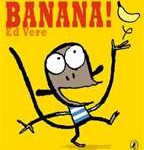 Want a book that every kid in your class can read with expression and enjoyment? Try Ed Vere’s nearly wordless picture book, Banana! I love using wordless and nearly wordless books with young readers. (If you want the myriad of reasons why wordless books are great for building narrative skills, fluency, top-down processing, etc., check out this article by the Center for the Improvement of Early Reading Achievement or this one from Education Week.) The facial expressions on the two monkeys are so engaging, and the text is limited to two words: banana and please with either question marks or exclamation points. Read it aloud once to your little ones, and they’ll be begging to read it on their own. Use it as a lesson on punctuation and how it changes the way we read words on the page. Take two monkey puppets or make monkey masks and let the kids act out the story – even better if you bring in real bananas!
Want a book that every kid in your class can read with expression and enjoyment? Try Ed Vere’s nearly wordless picture book, Banana! I love using wordless and nearly wordless books with young readers. (If you want the myriad of reasons why wordless books are great for building narrative skills, fluency, top-down processing, etc., check out this article by the Center for the Improvement of Early Reading Achievement or this one from Education Week.) The facial expressions on the two monkeys are so engaging, and the text is limited to two words: banana and please with either question marks or exclamation points. Read it aloud once to your little ones, and they’ll be begging to read it on their own. Use it as a lesson on punctuation and how it changes the way we read words on the page. Take two monkey puppets or make monkey masks and let the kids act out the story – even better if you bring in real bananas!
Chew on these great books
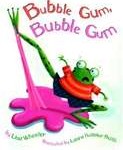 In a recent Remenar Seminar, a principal pointed out that I share lots of stories, but not a lot of non-fiction. That’s something I’m working on – I love fiction, but I know many learners really respond to informational text. So, I’m trying to pair up books on irresistible topics – like bubble gum!
In a recent Remenar Seminar, a principal pointed out that I share lots of stories, but not a lot of non-fiction. That’s something I’m working on – I love fiction, but I know many learners really respond to informational text. So, I’m trying to pair up books on irresistible topics – like bubble gum!
I’m stuck on the bouncy rhyme of Lisa Wheeler’s Bubble Gum, Bubble Gum: “chewy-gooey bubble gum/ icky-sticky bubble gum/ melting in the road/ along comes a toad” who gets stuck. Then a shrew gets stuck, and more animals get stuck – until a truck comes along! What will they do? Chew! And blow a bubble that lifts them from danger, until…
This makes a terrific storybox. Put this book, with its great illustrations by Laura Huliska-Beith, and puppet characters on wooden sticks in the storybox with a container of homemade pink playdough (make sure it’s non-toxic because one of your sweetpeas will probably try chewing on it) to retell the story.
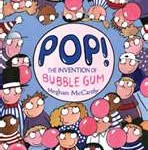 Then, share Pop! The Invention of Bubble Gum by Megan McCarthy. It is excellent non-fiction for younger students. The topic is sure to grab their attention, the text is short but interesting and full of fun facts, and the illustrations are large enough for a group read. At the end of the book, McCarthy adds lots more information (like who holds the world record for largest bubble) for kids who want to really sink their teeth into the subject.
Then, share Pop! The Invention of Bubble Gum by Megan McCarthy. It is excellent non-fiction for younger students. The topic is sure to grab their attention, the text is short but interesting and full of fun facts, and the illustrations are large enough for a group read. At the end of the book, McCarthy adds lots more information (like who holds the world record for largest bubble) for kids who want to really sink their teeth into the subject.
Want a super-duper Dubble Bubble science extension? Ask your students, “Do you think bubble gum will weigh more or less after you chew it?” Use the scientific method of forming a hypothesis, listing materials and procedure, controlling variables (everyone chews the same kind of gum for the same amount of time), and see what your results are!
Read MoreThe Red Hen
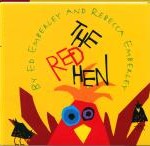 This is the kind of book that’s perfect for readers’ theater, a Storybox, or the dramatic play area. It has a straight-forward plot, few characters, and easy dialogue. The Red Hen by Rebecca Emberley and Ed Emberley is a bright retelling of the classic folktale. This version is way less wordy than some I have seen (and not used). The Red Hen wants to make a cake, but the cat, the rat, and the frog don’t want to help. Every time the Red Hen asks for assistance, the answer is the same:
This is the kind of book that’s perfect for readers’ theater, a Storybox, or the dramatic play area. It has a straight-forward plot, few characters, and easy dialogue. The Red Hen by Rebecca Emberley and Ed Emberley is a bright retelling of the classic folktale. This version is way less wordy than some I have seen (and not used). The Red Hen wants to make a cake, but the cat, the rat, and the frog don’t want to help. Every time the Red Hen asks for assistance, the answer is the same:
‘Not I,’ said the cat.
‘Not I,’ said the rat.
‘Bribbit,’ said the frog.”
Of course, Red Hen is undaunted. “I will do it myself.” And in the end, when the cake is ready to be eaten, Red Hen does that herself, too. I like this version better than some I have seen because the text is short enough for my youngest listeners but the folktale we’re all familiar with has been preserved. The art is large and bold in typical Emberley style, so it works for a group read-aloud. After one reading, all your little ones will chime in with cat, rat, frog and hen. Put this in a Storybox or a dramatic play area with puppets or masks to build those narrative retelling skills, and if you’re feeling culinary like Red Hen, make the recipe included on the last pages. Just be sure you don’t have to make the cake all by yourself.
Read More







